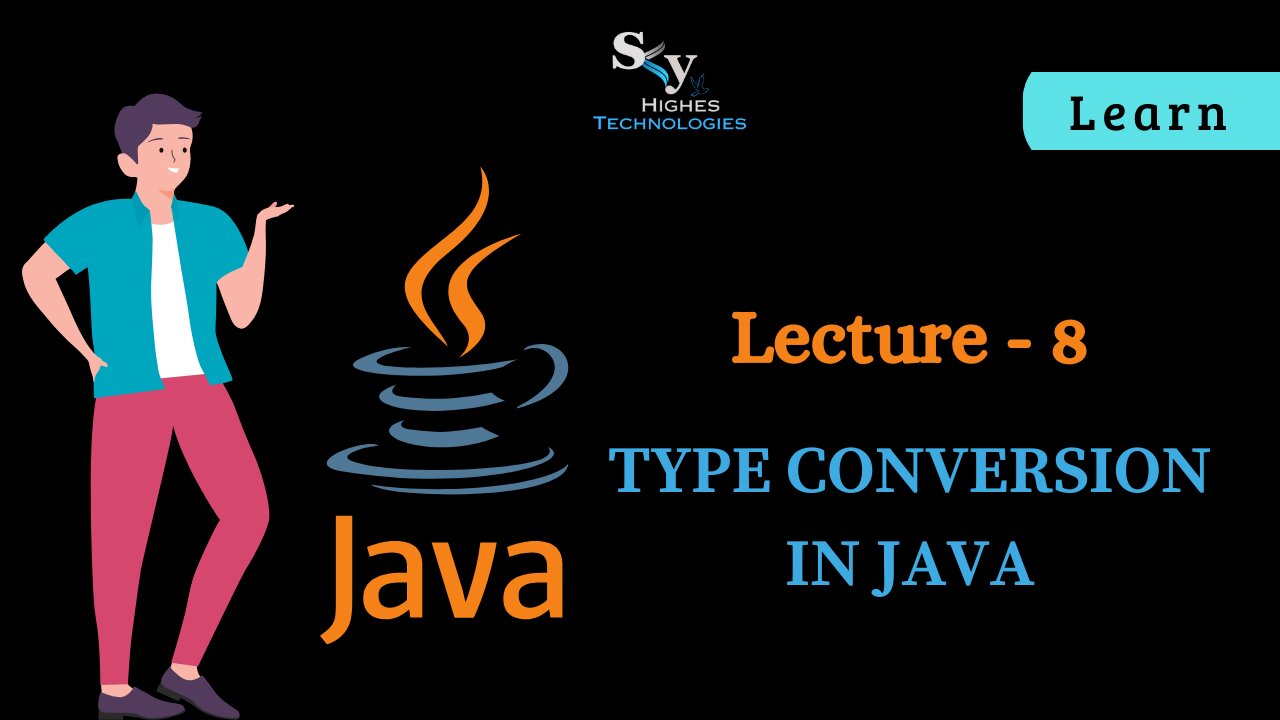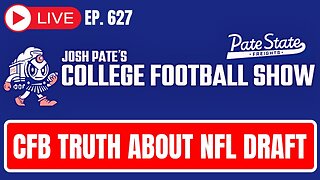Premium Only Content

#8 Types of conversion in JAVA | Skyhighes | Lecture 8
Here's a breakdown of the types of conversion in Java:
1. Implicit Conversion (Automatic):
Occurs automatically when a smaller data type is assigned to a larger compatible data type.
No loss of information, as the smaller value fits perfectly into the larger container.
Examples:
byte to int
int to long
float to double
2. Explicit Conversion (Type Casting):
Requires manual intervention using a cast operator to convert a value to a different data type.
Can lead to potential data loss or precision issues if not handled carefully.
Examples:
double to int (potential truncation of decimal part)
long to short (potential overflow if the long value is too large)
3. Widening Conversion:
A specific type of implicit conversion that always happens safely, without data loss.
Involves converting a smaller primitive data type to a larger one that can accommodate its entire range of values.
Examples:
int to long
char to int
float to double
4. Narrowing Conversion:
A type of conversion that involves converting a larger data type to a smaller one.
Potentially leads to data loss or unexpected results if not handled correctly.
Examples:
double to float (possible loss of precision)
long to int (possible truncation of higher-order bits)
5. String Conversion:
Involves converting other data types to strings for display or text manipulation.
Uses toString() methods or string concatenation.
Examples:
int age = 25; String ageString = Integer.toString(age);
double pi = 3.14159; String piString = "Pi is approximately " + pi;
Key Points:
Understand the data types involved and potential data loss or precision issues before performing conversions.
Use explicit type casting cautiously and with awareness of potential risks.
Widening conversions are generally safe, while narrowing conversions require careful consideration.
String conversion is essential for formatting and presenting data in human-readable formats.
-
 LIVE
LIVE
vivafrei
10 hours agoEp. 261: Criminal Judges ARRESTED! Election in Canada! Santos Sentenced! RFK Jr. & Autism & MORE!
29,777 watching -
 LIVE
LIVE
TheSaltyCracker
26 minutes agoThey Killed Her ReeEEEe Stream 04-27-25
11,815 watching -
 LIVE
LIVE
Nerdrotic
2 hours ago $2.82 earnedDiscoveries From Graham Hancock's "Fight for the Past" | Forbidden Frontier 099
968 watching -
 LIVE
LIVE
Sarah Westall
1 hour agoHidden Tech Resembles Star Trek: Malaysian Airline, Portals & Wormholes w/ Ashton Forbes
721 watching -
 LIVE
LIVE
Josh Pate's College Football Show
2 hours ago $0.01 earnedCFB Truth About NFL Draft | Sheduer & Ewers Slide | James Franklin vs Fans | 2025’s Biggest What-Ifs
19 watching -
 LIVE
LIVE
Due Dissidence
9 hours agoTrump's Polling COLLAPSES, WI Judge ARRESTED, Biden DRAGGED at WHCD, Corporations PULL Pride Funding
1,251 watching -
 LIVE
LIVE
EricJohnPizzaArtist
1 hour agoAwesome Sauce PIZZA ART LIVE Ep. #45: Tony the Cat!
123 watching -
 LIVE
LIVE
OhHiMark1776
3 hours ago🟢04-27-25 ||||| Halo Multiplayer Rumble: No. 13 ||||| Halo MCC (2019)
148 watching -
 15:05
15:05
Stephen Gardner
1 day ago🔥BREAKING: Trump HAMMERS Zelensky after Kicking France's Macron from meeting about Ukraine!
83.8K295 -
 LIVE
LIVE
AirCondaTv Gaming
3 hours agoSchedule I & Halo - Hustle Hard to Play Hard Later. May the TBags Flow Collab)
39 watching